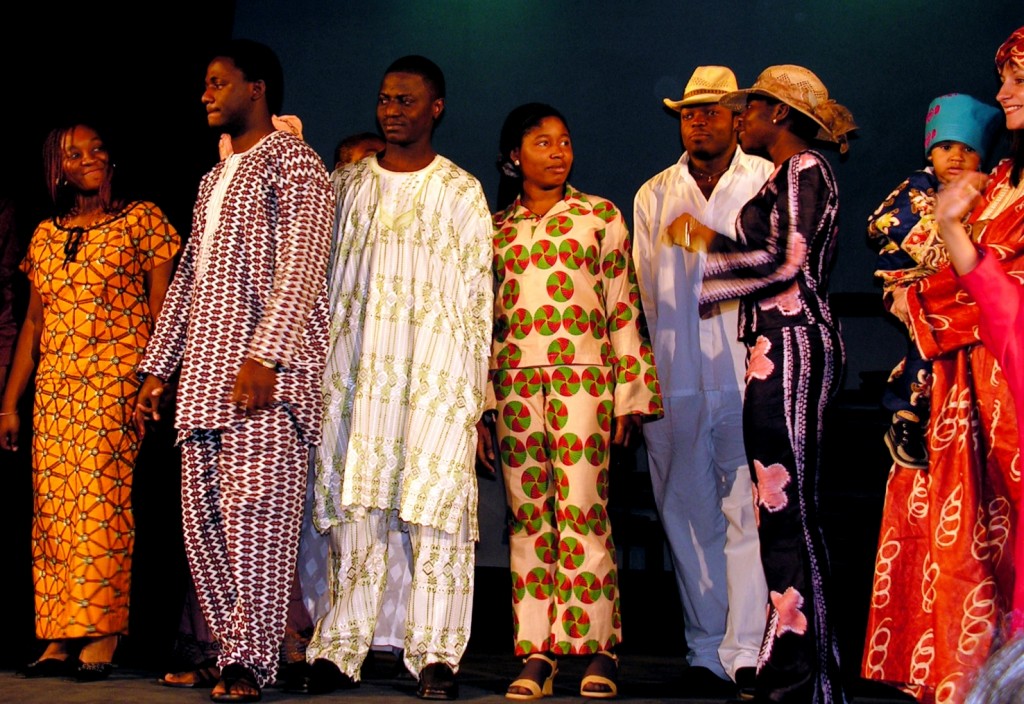This beautiful colorful photo of Africans inspires not only to talk about their outfits, but also to think about their characters, optimism, energy, kindness, hard work and artistic skills. The magic of colors and a variety of races presenting on the occasion of Africa Day, organized by the Institute of African attracts our attention especially in the gloomy winter weather.
It is good that Africans wear their colorful clothes for artistic performances during the summer, and especially on the African fashion show, which attracts crowds from Lodz.
Why in the city of Lodz?
African Institute was founded in Lodz in 2009 by the first black Member of Polish Parliament John Godson. Perhaps this is why Godson settled in Lodz, because it was historically associated with the four cultures. Lodz was inhabited by Poles, Germans, Jews and Russians. After the last war, three minorities disappeared from Lodz, but at the beginning of the 50’s completely different culture started to settle down here. Poland responded to the UN appeal for assistance to developing countries in education and began training programs for the Third World. Initially, the youth came from Asia – North Korea, China and Vietnam and they were preparing to study in Poland by learning the Polish language first. Then there came Bulgarians, Romanians, Czechs, Slovaks, Belarusians, Albanians and Yugoslavs. In 1960 came also Greeks, Sudanese, Ethiopians, Iraqis, Indonesians, Syrians, and Cubans Mongols.
The next decade was dominated by students from Czechoslovakia, East Germany, Hungary and the Soviet Union, the number of students from Vietnam, Nigeria, Kenya and also from Chile raised. In the 80’s Bolivians, Brazilians, Ecuadorians, Colombians, Peruvians, Costa Ricans, and Sudanese, Ethiopians, Nigerians, Tunisians, Algerians, Yemenis, Jordanians, Syrians, Iraqis, Iranians, Laotians, Indians and Students from Bangladesh came to Lodz. Till 1989 there were students of about 140 nationalities in Lodz.
What remained after them in Lodz? Unfortunately, nothing! Most of them left.
After 1989 the situation changed, a number of foreign students reduced, because universities introduced fees.
However, foreigners are still in Lodz, they study, learn the Polish language and work. There are about 2200 foreign students in Lodz on all campuses. Countries of their origin have changed as well as the reasons of arrivals. Foreigners come not only to study but also to work. There are investors in Lodz and companies employ foreigners. So we can see foreign faces, we can hear foreign languages. We have racial and cultural diversity in Lodz, but in a very little way. 4000 people of other nationalities – in comparison with the number of inhabitants of Lodz and its region – it is not a large number. We’re still culturally homogeneous.
The benefits of diversity
Nevertheless, cultural diversity among a homogeneously population of our country can bring an advantageous difference in language, customs, science, politics and the economy. For example in business the concept of diversity includes hiring people of different races and religions, and thus promote cultural diversity of the staff. It can be seen in companies such as Infosys, P & G, Indesit, B / S / H, CERI, and others. It’s very praiseworthy.
more information: African Institute


